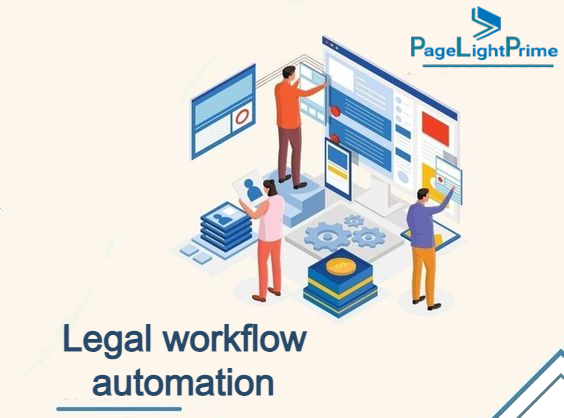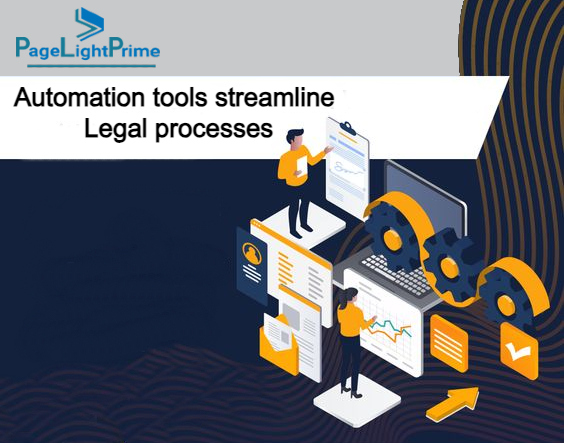Legal Workflow Automation: A Reference and Beginner’s Guide
The integration of legal technology has become essential in enhancing efficiency, cost reduction, and elevating client service. One aspect that has experienced substantial transformation is legal workflow automation.

Written by Knowledge Team, posted on July 22, 2023
By leveraging automation tools, law firms and legal professionals can optimize their processes, save valuable time, and concentrate on delivering exceptional legal services. This strategic approach enables them to achieve their objectives, whether it’s maximizing billable hours or enhancing overall efficiency.
The concept of legal workflow automation offers numerous benefits, and its implementation can be achieved with practical examples without significantly increasing technology investments or resources. For instance, let’s consider document assembly. Without automation, legal professionals often spend considerable time manually drafting standard documents for various cases. By implementing document assembly software, the process becomes streamlined. The software allows the creation of templates with placeholders for case-specific details. When generating a document, the software automatically populates the placeholders with relevant information, producing a complete and accurate document in a fraction of the time it would take to create it manually. The benefits of document automation can justify the technology adoption for all law firms.
What is Legal Workflow Automation
Legal workflow automation refers to the use of technology to automate repetitive, manual tasks and streamline various processes within a law firm. These tasks may include document assembly, time tracking, billing, case management, client communication, and more. By integrating automation tools into their operations, law firms can optimize productivity, reduce errors, and allocate more time to strategic decision-making and client interactions.

Benefits of Legal Workflow Automation

Increased Efficiency
Automation eliminates time-consuming manual tasks, allowing legal professionals to focus on complex legal matters and client relationships.
Enhanced Accuracy
By reducing human error, automation ensures accuracy in document generation and record-keeping.
Cost Savings
Automation optimizes resource allocation, leading to reduced operational costs and increased profitability.
Improved Client Service
Efficient workflows mean quicker responses to clients and more personalized interactions.
Compliance and Risk Management
Automation tools can help firms stay compliant with legal regulations and reduce potential legal risks.
Scalability
Automated workflows can scale with the firm’s growth, accommodating an increased workload without sacrificing quality.
Efficient Contract Compliance:
Contract Lifecycle Management (CLM) is an indispensable process for law firms and legal departments, encompassing the creation, negotiation, execution, and comprehensive management of contracts from start to finish. By integrating legal workflow automation, CLM can experience substantial improvements, streamlining operations, and optimizing contract management efficiency.
Steps for Legal Workflow Automation

Identify Tasks to Automate
The first step in implementing legal workflow automation is to identify the tasks and processes that would benefit most from automation. Engage your team in discussions to pinpoint repetitive and time-consuming tasks that could be streamlined. Common tasks suitable for automation include document creation, time tracking, billing, client communication, and case management.
Create a Governance Plan with Management Buy-in
Before diving into automation, develop a comprehensive governance plan outlining the goals, objectives, and expected outcomes of the automation initiative. Obtain buy-in from management and key stakeholders to ensure support and commitment throughout the process. A well-defined governance plan helps set clear expectations and guides decision-making during the automation journey.
Choose the Right Automation Tools
Once you have a clear understanding of the tasks to be automated and have management support, it’s time to choose the appropriate automation tools. Conduct thorough research and explore legal practice management software and specialized automation tools that align with your firm’s requirements and budget.
Implement Change Management
Introducing automation into an established workflow may encounter resistance from some team members. Implement a robust change management strategy to ease the transition and gain acceptance from your staff. Emphasize the benefits of automation, such as time savings, reduced errors, and increased productivity, to encourage enthusiasm for the new tools.
Provide Comprehensive Training
To ensure successful adoption of automation tools, provide comprehensive training for all staff members who will be using the new software. Tailor the training to address the specific needs of different roles within the firm. Hands-on workshops, video tutorials, and one-on-one coaching sessions can be effective in helping users become proficient with the new tools.
Test and Refine
Before fully implementing the automated workflows, conduct thorough testing to identify and address any potential issues. Pilot the automation on a smaller scale or with a select group of team members to gather feedback and make necessary adjustments. This testing phase helps refine the automation process before rolling it out firm wide.
Monitor Performance and Optimize
Once the automation is in place, continuously monitor the performance of the automated workflows. Track key metrics such as time saved, increased accuracy, and improved client satisfaction. Regularly review the automation processes to identify areas that could be further optimized or enhanced.
Ensure Data Security and Compliance
With the adoption of automation tools, it is crucial to prioritize data security and compliance. Ensure that the automation software adheres to industry standards and regulatory requirements for data protection and confidentiality.
Foster a Culture of Continuous Improvement

Encourage feedback from staff regarding the automation tools and processes. Foster a culture of continuous improvement, where team members are encouraged to suggest ideas for further automation or enhancements. An open and collaborative environment will contribute to the successful integration of automation into your firm’s workflow.
Legal workflow automation is a powerful tool that can transform the way law firms operate, leading to increased efficiency, accuracy, and client satisfaction. By following the steps outlined in this guide, you can strategically implement automation into your firm’s workflow. Remember to involve all stakeholders, invest in comprehensive training, and continuously monitor and optimize your automated processes. Embrace legal workflow automation as a catalyst for positive change and to propel your firm into a more efficient and successful future.
